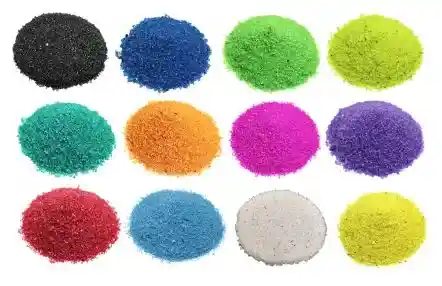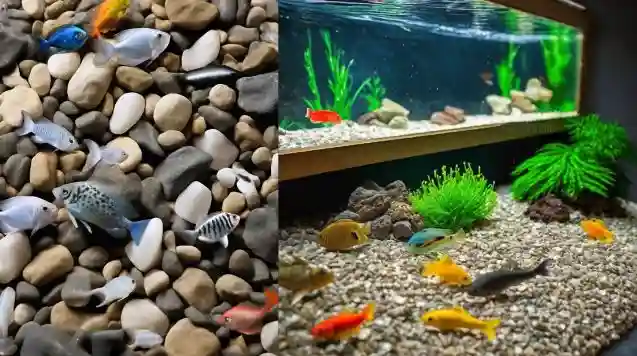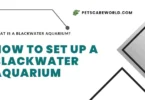Aquarium gravel is one of the most common substrates used in fish tanks, terrariums, and other water features. It can provide a natural and attractive look, as well as some benefits for the health and well-being of your aquatic pets and plants. However, choosing the right type and amount of gravel can be tricky, as there are many factors to consider. In this article, we will explain what aquarium gravel is, why it is important, how to use it, and some of the best options available.
What is aquarium gravel?
Aquarium gravel is a term that refers to any small, loose, and rounded material that is used to cover the bottom of a fish tank or other water feature. It can be made of natural or artificial materials, such as stone, glass, plastic, or resin. Aquarium gravel comes in various sizes, shapes, colors, and textures, depending on the preference and needs of the user. Some of the most common types of aquarium gravel are:
Natural gravel
This is gravel that is sourced from nature, such as river pebbles, beach sand, or crushed rock. Natural gravel is usually inert, meaning it does not affect the water chemistry or pH level of the tank. It can also provide a realistic and organic look to your aquarium, as well as some hiding places and foraging opportunities for your fish and invertebrates. However, natural gravel may contain some impurities, such as dirt, dust, or harmful bacteria, that can affect the water quality or introduce diseases to your tank. Therefore, it is important to rinse and sterilize natural gravel before using it in your aquarium.
Imagine the Exotic Pebbles Polished Mixed Gravel as nature’s own masterpiece. It’s 100% straight from the earth, sourced from quarries worldwide, and boasts a delightful range of earthy hues and sizes. It’s like a mini-mosaic of the planet for your aquarium!
Artificial gravel
This is gravel that is manufactured from synthetic materials, such as glass, plastic, or resin. Artificial gravel is usually coated with acrylic or epoxy, which makes it more durable, colorful, and resistant to water damage. Artificial gravel can also be designed to have special features, such as glowing in the dark, changing colors, or releasing beneficial minerals or bacteria into the water.
Artificial gravel can provide a more vibrant and diverse look to your aquarium, as well as some benefits for the water quality and the health of your fish and plants. However, artificial gravel may also contain some chemicals, such as dyes, paints, or metals, that can leach into the water and affect the water chemistry or pH level of the tank. Therefore, it is important to choose artificial gravel that is safe and non-toxic for your aquarium.
Picture Pure Water Pebbles as the chameleons of gravel. They start as all-natural gravel and then get coated with acrylic, transforming into a dazzling array of colors and sizes. It’s like nature with a splash of artistic flair for your aquarium’s substrate!
Why is aquarium gravel important?

Aquarium gravel is not only a decorative element but also a functional one. It can provide several benefits for your aquarium, such as:
Supporting biological filtration
Aquarium gravel can act as a medium for the growth of beneficial bacteria, which are essential for breaking down the organic waste and ammonia produced by your fish and plants. These bacteria form a thin layer on the surface of the gravel, called the biofilm, which helps to maintain the nitrogen cycle and the water quality of your tank.
Aquarium gravel can also trap some of the solid waste and debris that fall to the bottom of the tank, preventing them from clogging the filter or polluting the water. However, this also means that aquarium gravel needs to be cleaned regularly, either by vacuuming or stirring, to remove the accumulated waste and prevent the formation of anaerobic zones, which can produce toxic gases such as hydrogen sulfide or methane.
Providing a substrate for plants
Aquarium gravel can also serve as a substrate for plants, which is important for adding oxygen, absorbing nutrients, and creating a natural environment for your fish and invertebrates.
Aquarium gravel can anchor the roots of the plants as well as provide some nutrients and minerals for their growth. However, not all plants can grow well on gravel, as some may require finer or richer substrates, such as sand or soil. Therefore, it is important to choose plants that are compatible with your gravel, as well as supplement them with fertilizers or root tabs, if needed.
One type of gravel that’s a real hit with plants is ‘Seachem Flourite‘. It’s like a treat for your green pals because it’s made from natural clay and packed with all the good stuff they crave, like iron and other key nutrients. It’s like a superfood for your aquarium garden!
Enhancing the appearance and behavior of your fish
Aquarium gravel can also affect the appearance and behavior of your fish, as it can reflect or contrast their colors, as well as influence their mood and activity. Aquarium gravel can make your fish more visible and attractive, especially if you choose a color that complements or contrasts their natural coloration.
For example, dark-colored gravel can make bright-colored fish stand out more, while light-colored gravel can make dark-colored fish more visible.
Aquarium gravel can also make your fish feel more comfortable and relaxed, especially if you choose a color that matches their natural habitat. For example, brown or green gravel can mimic the bottom of a river or lake, while blue or white gravel can mimic the surface of the ocean or the sky. Aquarium gravel can also stimulate your fish to display their natural behaviors, such as digging, burrowing, or spawning, depending on the size and texture of the gravel.
Different types of gravel can affect how your fish interact with their environment. When you use fine or smooth gravel, it might encourage your fish to explore and sift through the substrate, almost like they’re on a treasure hunt. On the flip side, if you opt for coarse or rough gravel, it could deter your fish from digging around too much. It’s like picking the right texture for your fish’s comfort and playtime!
How Do I Use Aquarium Gravel?
Aquarium gravel is easy to use, but it requires some preparation and maintenance. Here are some steps to follow when using aquarium gravel in your tank:
Choose the right type and amount of gravel
As mentioned above, there are many types of aquarium gravel available, each with its own advantages and disadvantages. Therefore, you need to choose the gravel that suits your tank size, water type, fish species, plant species, and personal preference. You also need to choose the right amount of gravel, depending on the depth and coverage you want to achieve.

Generally, you need about 1 to 2 pounds of gravel per gallon of water, or about 1 to 2 inches of gravel depth, for a standard aquarium. However, this may vary depending on the shape and size of your tank, as well as the type and size of your gravel. You can use a gravel calculator to estimate the amount of gravel you need for your tank.
Rinse and sterilize the gravel
Before adding the gravel to your tank, you need to rinse and sterilize it to remove any dust, dirt, or harmful bacteria that may be present. You can do this by placing the gravel in a bucket or a colander and running tap water over it until the water runs clear. You can also use a hose or a shower head to spray the gravel and agitate it with your hands.
You can also sterilize the gravel by boiling it in water for 10 to 15 minutes or soaking it in a bleach solution for 15 to 20 minutes, followed by rinsing and dechlorinating it. However, this may not be necessary or advisable for some types of gravel, especially artificial or coated ones, as it may damage or alter their color or texture. Therefore, you should always follow the instructions and recommendations of the manufacturer or the seller when cleaning your gravel.
Add the gravel to your tank
After rinsing and sterilizing the gravel, you can add it to your tank. You can do this by using a cup or a scoop to transfer the gravel from the bucket or the colander to the tank, or by pouring the gravel directly from the bag into the tank.
You should spread the gravel evenly across the bottom of the tank, creating a slight slope from the back to the front, to create a sense of depth and perspective. You can also create some hills or valleys, or leave some areas bare, to create some variation and interest. You should avoid adding too much or too little gravel, as this may affect the water flow, the filtration, and the plant growth in your tank.
Clean and maintain the gravel
Once the gravel is in your tank, you need to clean and maintain it regularly to keep it in good condition and prevent any problems. You can do this by using a gravel vacuum or a siphon to remove any waste or debris that accumulates on the surface or between the gravel particles. You should do this at least once a week, or more often if you have a large or heavily stocked tank.
You can also use a gravel rake or a fork to stir and aerate the gravel, especially in the corners or areas with low water flow, to prevent the formation of anaerobic zones. You should do this at least once a month, or more often if you have deep or fine gravel. You can also use a gravel cleaner or a brush to scrub and polish the gravel, especially if it becomes dull or stained over time. You should do this at least once a year, or more often if you have light or artificial gravel.
Conclusion
Aquarium gravel is a versatile and beneficial substrate for your fish tank or other water features. It can provide a natural and attractive look, as well as support biological filtration, provide a substrate for plants, and enhance the appearance and behavior of your fish. However, choosing the right type and amount of gravel can be tricky, as there are many factors to consider. Therefore, you should do some research and planning before buying and using aquarium gravel in your tank. You should also rinse and sterilize the gravel before adding it to your tank. Always clean and maintain it to keep it in good condition and prevent any problems. Aquarium gravel can make a big difference in your tank, so choose wisely.
Disclaimer
“As an Amazon Associate, we earn from qualifying purchases where there is no additional cost to you. This is one way to support us.” The products displayed here are well-researched, highly rated by users, and fast-moving.


















Leave a Comment
You must be logged in to post a comment.